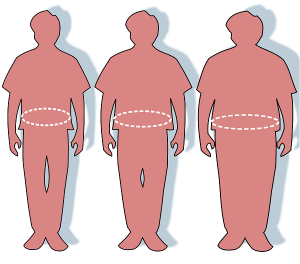Recent large-scale study, published in Cancer Research, finds that a high body mass index, increased waist circumference, and type 2 diabetes are associated with an increase in liver cancer risk.
Liver cancer as the name suggests, starts in the liver, rather than traveling there from another organ or tissue; it is relatively uncommon but serious.
Globally, around 700,000 people are diagnosed each year.
Why has liver cancer incidence increased?
A team of researchers from the National Cancer Institute decided to investigate whether there could be links between these three obesity-related parameters and the rise in liver cancer.
Overall, type 2 diabetes occurred in 6.5 percent of study participants and 2,162 developed liver cancer.
Once the data had been analyzed, the team found that for every increase in body mass index (BMI) of 5 kilograms per meter squared, there was a parallel increase in liver cancer risk; this equated to a 38 percent increase in men and 25 percent in women.
As for waist circumference, every 5-centimeter extension increased the risk by 8 percent.
Once the findings had been adjusted for smoking, race, alcohol intake, and BMI, individuals with type 2 diabetes were 2.61 times more likely to develop liver cancer; this risk increased in line with BMI.
for adults with type 2 diabetes mellitus, their risk of developing liver cancer is more than doubled relative to those who do not have type 2 diabetes mellitus, according to this study.”
From a public health perspective, these results are very important because obesity and diabetes, unfortunately, are common conditions in the population. While some other well-described risk factors, such as hepatitis B virus or hepatitis C virus, are associated with increased risks of liver cancer, these factors are much less common than are obesity and diabetes.


